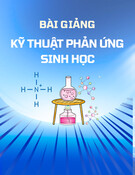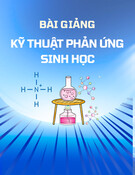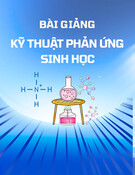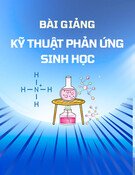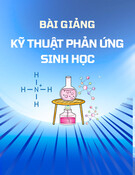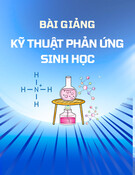
CÔNG NGHỆ https://jst-haui.vn Tạp chí Khoa học và Công nghệ Trường Đại học Công nghiệp Hà Nội Tập 60 - Số 8 (8/2024)
152
KHOA H
ỌC
P
-
ISSN 1859
-
3585
E
-
ISSN 2615
-
961
9
GENE EXPRESSION ANALYSIS INVOLVED IN FLAVONOID BIOSYNTHESIS OF PHYLLANTHUS AMARUS
PHÂN TÍCH BIỂU HIỆN CÁC GEN LIÊN QUAN ĐẾN QUÁ TRÌNH SINH TỔNG HỢP FLAVONOID Ở CÂY DIỆP HẠ CHÂU Hoang Minh Quan1,*, Hoang Van Quang2 DOI: http://doi.org/10.57001/huih5804.2024.279 ABSTRACT Flavonoids, a diverse group of secondary metabolites, are known for their health-promoting properties, including antioxidant, anti-
inflammatory, and
anticancer activities. Phyllanthus amarus
is a medicinal plant with extensive traditional use and it is a rich source of flavonoids. This study aimed to elucidate the
gene expression in flavonoid biosynthesis in P. amarus
. Using quantitative polymerase chain reaction (qPCR), we investigated the expression of Phenylalanine
ammonia-lyase (PAL), chalcone synthase (CHS), and chalcone isomerase (CHI
), which are key genes associated with flavonoid biosynthesis. Our findings
contribute to a deeper understanding of flavonoid biosynthesis in P. amarus
and provide valuable insights into the molecular mechanisms involved. This
knowledge can be leveraged to optimize the production of specific flavonoids with potential health benefits and to develop st
rategies for enhancing the
bioactivity of P. amarus as a medicinal plant. This study thus contributes to the expanding field o
f plant biochemistry and lays the foundation for further research
on the biosynthesis and regulation of flavonoids in Phyllanthus amarus. Keywords: Phyllanthus amarus, flavonoid biosynthesis, gene expression analysis, CHI, CHS, PAL. TÓM TẮT Flavonoid, một nhóm chất chuyển hóa thứ cấp đa dạng, được biết đến với đặc tính tăng cường sức khỏe, bao gồm các hoạt động chống oxy hóa, chố
ng viêm
và chống ung thư. Phyllanthus amarus là một cây thuốc được sử dụng phổ biến, rộng rãi, và là một nguồn flavonoid dồi dào. Nghiên cứu này nhằm mụ
c đích làm
sáng tỏ sự biểu hiện gen trong quá trình sinh tổng hợp flavonoid ở P. amarus. Sử dụng phản ứng chuỗi polymerase định lượng (qPCR), chúng tôi đã nghiên cứ
u
biểu hiện của Phenylalanine amoniac-lyase (PAL), chalcone synthase (CHS) và chalcone isomerase (CHI), là các gen chủ chốt liên quan đến sinh tổng hợ
p
flavonoid. Những phát hiện của chúng tôi góp phần hiểu biết sâu sắc hơn về quá trình sinh tổng hợp flavonoid ở P. amarus và cung cấp những hiểu biết có giá trịvề các cơ chế phân tử liên quan. Kiến thức này có thể được tận dụng để tối ưu hóa việc sản xuất các flavonoid cụ thể có tiềm năng mang lại lợi ích sức khỏ
e và
phát triển các nhằm tăng cường hoạt tính sinh học của P. amarus như một cây thuốc. Do đó, nghiên cứu này góp phần mở rộng lĩnh vực hóa sinh thực vật và đặ
t
nền tảng cho các nghiên cứu sâu hơn về sinh tổng hợp và điều hòa flavonoid ở Phyllanthus amarus. Từ khóa: Phyllanthus amarus, sinh tổng hợp flavonoid, phân tích biểu hiện gen, CHI, CHS, PAL. 1Phacogen Institute of Technology, Vietnam 2Center for post gradute studies, Hanoi University of Industry, Vietnam *Email: hoangminhquan2210@gmail.com Received: 10/7/2024 Revised: 16/8/2024 Accepted: 27/8/2024 1. INTRODUCTION 1.1. General introduction to Phyllanthus amarus Phyllanthus amarus, commonly known as Stonebreaker or Seed-under-leaf, is a tropical medicinal plant that has been widely used in traditional medicine for treating various diseases such as liver disorders, gastrointestinal ailments, and kidney disorders [1]. This leafy herbal plant is found in tropical regions in the

P-ISSN 1859-3585 E-ISSN 2615-9619 https://jst-haui.vn SCIENCE - TECHNOLOGY Vol. 60 - No. 8 (Aug 2024) HaUI Journal of Science and Technology 153
Americas, Africa, India, China, and Southeast Asia, this plant is a small, annual herb that grows to a height of 10 - 60cm with thin branches spread out; each branch has two rows of small, elliptic-oblong leaves of 5 - 10mm long that are arranged alternately and its radial flowers are star-shaped and about 2mm in size [1]. The plant is rich in beneficial compounds including flavonoids, alkaloids, terpenoids, and lignans. Flavonoids in this plant have pharmacological activities such as anti-inflammatory, antioxidant, and anti-cancer properties [2]. This plant has a flavonoid biosynthesis process to be able to prepare flavonoids. However, the regulatory mechanisms underlying the biosynthesis of these flavonoids in Phyllanthus amarus are not well understood. Fig. 1. Phyllanthus amarus whole plant 1.2. General introduction to Flavonoids and their roles Fig. 2. Basic flavonoid structure and main types of flavonoids [3] Flavonoids are secondary metabolites found extensively in plants that play various and essential roles in plants, including pollination, pigmentation, UV protection, plant defense, and highly beneficial for human health due to their potent pharmacological effects [3]. They are derived from phenylpropanoid metabolism, which involves the synthesis of several intermediate compounds, including phenylalanine, coumaric acid, and cinnamic acid [4]. These compounds are catalyzed by a series of enzymes to produce the flavonoid backbone, which is structurally composed of two aromatic rings linked by a three-carbon bridge (C6-C3-C6) and functional groups that vary depending on the type of flavonoid (Fig. 2). In this study, we investigate the gene expression patterns and mechanisms involved in the biosynthesis of flavonoids in Phyllanthus amarus. 1.3. Flavonoid biosynthesis process in Phyllanthus amarus Fig. 3. The biosynthesis pathway of flavonoids. (A) The biosynthesis of p-coumaroyl-CoA; (B) The biosynthesis of different kinds of flavonoids from p-coumaroyl-CoA and malonyl-CoA. PAL: Phenylalanine ammonia-lyase, C4H: Cinnamic acid 4-hydroxylation, 4CL: 4-Coumarate: Coenzyme A ligase, CHS: Chalcone synthase, CHI: Chalcone isomerase, FHT: Flavanone 3β-hydroxylase, FNS Ι: Flavone synthase Ι, FLS: Flavonols synthase [5] Flavonoid biosynthesis is a complex metabolic pathway involving a series of enzymatic reactions. It starts with the conversion of phenylalanine into naringenin chalcone, which serves as the precursor for various classes of flavonoids. Enzymatic modifications of naringenin chalcone lead to the synthesis of different subclasses of flavonoids, such as flavones, flavonols, and

CÔNG NGHỆ https://jst-haui.vn Tạp chí Khoa học và Công nghệ Trường Đại học Công nghiệp Hà Nội Tập 60 - Số 8 (8/2024)
154
KHOA H
ỌC
P
-
ISSN 1859
-
3585
E
-
ISSN 2615
-
961
9
flavanones. Phenylalanine ammonia-lyase (PAL), chalcone synthase (CHS), and chalcone isomerase (CHI) are key enzymes involved in the flavonoid biosynthetic pathway [5] (Fig. 3). PAL is the first enzyme in the phenylpropanoid pathway, a precursor to the flavonoid biosynthetic pathway. It catalyzes the deamination of phenylalanine to trans-cinnamic acid, a critical step that links primary and secondary metabolism in plants [6]. CHS is considered the gateway to flavonoid biosynthesis. It catalyzes the condensation of one molecule of CoA-ester of cinnamic acid or derivatives with three molecules of malonyl-CoA, yielding a naringenin chalcone [7]. This reaction is the first committed step in flavonoid biosynthesis, leading to the production of a wide range of flavonoids. CHI plays a crucial role following the action of CHS. It catalyzes the cyclization of chalcones into (2S)-flavanones, a critical step in the flavonoid biosynthetic pathway [8]. This fast and practically irreversible reaction drives the pathway towards flavonoid production. To compare the performance of these genes, we used 2 other genes Phenyl coumaran benzylic ether reductase (PCBER) and pinoresinol reductases (PrR), which are in the lignan biosynthesis pathway and have the same initial steps as flavonoid biosynthesis pathway in the phenylpropanoid pathway. 1.4. Significance of studying gene expression related to flavonoid synthesis in Phyllanthus amarus In this analysis, we investigate the molecular mechanisms involved in the biosynthesis of flavonoids in Phyllanthus amarus. Specifically, we will analyze the gene expression patterns of key regulatory genes and transcription factors involved in flavonoid biosynthesis, using quantitative real-time PCR (qPCR) and statistical analyses. By examining the gene expression patterns under different developmental stages and environmental stimuli, we aim to gain insights into the regulatory mechanisms that influence flavonoid biosynthesis in Phyllanthus amarus. The study of gene expression involved in flavonoid biosynthesis in Phyllanthus amarus can provide valuable insights into how these beneficial compounds are produced. This could further our understanding of the plant’s medicinal properties and potentially lead to enhanced cultivation methods or new medical treatments. Understanding the genetic basis of flavonoid biosynthesis also opens up possibilities for bioengineering efforts to increase flavonoid production or alter the types of flavonoids produced, with wide-ranging implications for agriculture, nutrition, and medicine. 2. SCIENTIFIC OBJECTIVE To understand the regulatory mechanisms: Investigate the transcriptional regulation of genes involved in flavonoid biosynthesis in Phyllanthus amarus, aiming to uncover the key regulatory factors and signaling pathways that control the production of specific flavonoids. To determine gene expression patterns: Quantify the expression levels of specific genes involved in flavonoid biosynthesis under different experimental conditions, such as tissue types, developmental stages, or environmental factors, to identify patterns of gene expression and gain insights into the factors influencing flavonoid production. 3. MATERIAL AND METHOD 3.1. Material Phyllanthus amarus plants were collected from Thai Nguyen at the age of 4 months. Fully developed leaves were harvested from mature plants for subsequent analysis. 3.2. Extraction Total RNA was extracted from 5 - 10 grams of leaves and stems which were collected using the phenol/chloroform extraction method. Leaf and stem tissues were ground to a fine powder with 2% PVP in liquid nitrogen before adding 2ml of Extraction Buffer (0.1M Tris.HCl pH 8.0, 1% SDS, 0.05M EDTA pH 8.0; 1% β-mercaptoethanol) warmed to 65°C. Centrifuge at 15000rpm, 4°C, 10 minutes after adding phenol: chloroform acid (1:1) to remove DNA, help stabilize the surface and prevent foaming when mixing. Repeat the previous step with 5M NaOAc and phenol acid: chloroform at a ratio of 3:7. The solution was washed with 100% and 70% ethanol to dissolve and wash away the precipitation. The resulting RNA was treated with DNase to remove genomic DNA contamination. The quality of the extracted RNA was assessed by gel electrophoresis. 3.3. cDNA Synthesis (Reverse Transcription) Reverse transcription was performed using Revert Aid Reverse Transcriptase KIT (Thermo Fisher Scientific). Purified RNA was reverse transcribed into complementary DNA (cDNA) using random hexamer and reverse transcriptase enzyme (ribolock and revert acid). The cDNA synthesis reaction mixture was incubated at a specified temperature and time according to the kit instructions.

P-ISSN 1859-3585 E-ISSN 2615-9619 https://jst-haui.vn SCIENCE - TECHNOLOGY Vol. 60 - No. 8 (Aug 2024) HaUI Journal of Science and Technology 155
Primer annealing at 25°C in 5 minutes, DNA polymerization at 42°C in 60 minutes, and enzyme deactivation at 70°C in 5 minutes. The synthesized cDNA served as a template for subsequent gene expression analysis. The verification of cDNA synthesis outcomes was conducted utilizing housekeeping genes and Polymerase Chain Reaction (PCR) methodologies. Post the conversion of the RNA sample into cDNA, a PCR reaction was initiated, employing the synthesized cDNA as a template and primers specific to the housekeeping genes. Upon completion of the PCR procedure, the resultant PCR product was subjected to electrophoresis on an agarose gel to ascertain the presence of bands correlating to a predetermined size. 3.4. Primer Design Table 1. Primer sequence, Tm, and length of CHI, PCBER, PrR, PAL CHS, CHI Gene Primer Sequence (5’ - 3’) Tm (oC)
Length (bp)
PaCHI F: ACAGTGACCATGATCTTGCC 55 122 R: TTGTCAAGAGCTTCGCCTTC PCBER F: TCCAACATAGTTTAAAATAGGAGAG 56 265 R: TTTGTACCATTTCTGGAGTCAAGA PrR F: AGGTATTTGGACTTTGTCTGGAT 54 250 R: ATTTCTTCTTGTTAGAGACACTGC PAL F: ATTGCTGTGAAAACCAAATCGAAC 55 273 R: GAAAACGAGAAGAATGCTAGCAC CHS F: CACAGCGGGTTATGCTATAC 56 156 R: GTCTATCTGCACTTGGTGG CHS13 F: GAAGCGATACATATGCACCTGA 55 180 R: TGCGTGATCTTTGACTTTGG EF 1
F: CACAGCGGGTTATGCTATAC 56 117 R; GTCTATCTGCACTTGGTGG The primer design for CHI, PCBER, PrR, PAL CHS, and CHI genes is a meticulous process that begins with the identification of the gene sequence. This sequence can be sourced from a reliable database. In this research, the sequence was collected in NCBI, scientific paper, and from some species of the same genus. The next step involves selecting locations on the gene sequence for the forward and reverse primers. These locations should ideally flank the region of the gene that is intended for amplification. The design of the primer sequences is a critical step that is based on several key criteria. The primers typically be 18 - 24 bases in length, with a G/C content within the range of 40 - 60%. The melting temperature ™ should lie within 50 - 60°C, and the Tm of primer pairs should not deviate by more than 5°C from each other. It is also essential to ensure that the primers do not contain complementary regions to prevent primer-dimer formation. To ensure specificity, Primer-BLAST has been used to verify that the primers will bind exclusively to the target gene and not to other regions in the genome. Once the primer design had been finalized and deemed satisfactory, it was ordered from the supplier. 3.5. PCR Amplification Polymerase Chain Reaction (PCR) was employed to amplify the target genes involved in flavonoid biosynthesis. Gene-specific primers were designed using bioinformatics tools and synthesized by a commercial provider. PCR reactions were performed in a thermal cycler, consisting of the cDNA template, gene-specific primers (Table 1), dNTPs, DreamTaq DNA Polymerase, MgCl2, and Buffer. The cycling parameters included denaturation at 95°C for 20 seconds, annealing at 53°C for 20 seconds, and extension at 72°C for a 20s. The PCR products were resolved on agarose gel electrophoresis to visualize the amplified fragments. 3.6. Quantitative Real-time PCR (qPCR) Quantitative real-time PCR (qPCR) was conducted to quantify the expression levels of target genes accurately. qPCR reactions were carried out using a qPCR kit and a real-time PCR instrument. The reaction mixture contained cDNA, gene-specific primers, fluorescent probes, and the qPCR master mix. The amplification was monitored in real time, and the quantification cycle (Cq) values were recorded. The relative expression levels of the target genes were determined using appropriate reference genes and normalization methods. To determine qPCR performance, create a standard curve using a series of DNA samples with concentrations ranging from 106 to 102. 3.7. Statistical Analysis Statistical analysis was performed using appropriate software packages. The expression data obtained from qPCR experiments were analyzed using the delta-delta Ct method. This method involves calculating the difference in the cycle threshold (Ct) values between the target and reference genes (delta Ct), and then comparing these values between the control and treatment groups (delta-delta Ct). The resulting values can be used to calculate the

CÔNG NGHỆ https://jst-haui.vn Tạp chí Khoa học và Công nghệ Trường Đại học Công nghiệp Hà Nội Tập 60 - Số 8 (8/2024)
156
KHOA H
ỌC
P
-
ISSN 1859
-
3585
E
-
ISSN 2615
-
961
9
fold change in gene expression, providing a measure of the relative expression levels of the target genes. 4. RESULT 4.1. RNA quality and quantity analysis Fig. 4. RNA Samples of Phyllanthus amarus leaves (1), and stems (2) To assess the quality and quantity of total RNA extracted from P. amarus leaves and stem, we performed denaturing agarose gel electrophoresis and spectrophotometric measurements. The gel electrophoresis showed two distinct bands corresponding to the 18S and 28S ribosomal RNAs, with no signs of smearing or degradation (Fig. 4). The 28S band was about twice as intense as the 18S band, indicating good RNA integrity. The RNA concentration and purity were determined by measuring the absorbance at 260nm and 280nm using a NanoDrop spectrophotometer. The average RNA concentration of root and leaf samples was 718.6ng/μl and 732.5ng/μl, and the average A260/A280 ratio was 1.93 and 1.9; indicating a high RNA purity. 4.2. Optimal primer design and validation for real-time PCR analysis Fig. 5. Optimal real-time PCR results of Phyllanthus amarus. Leaf (1-7) and stem (8-14) samples with primers of PAL (1,8), PrR (2,9), PCBER (3,10), CHI (4,11), CHS1 (5,12), CHS13 (6,13), EF1 (7,14) To validate the primer quality and quantity, we performed gel electrophoresis of the real-time PCR products using Ethidium bromide (EtBr) staining. The gel electrophoresis showed clear and single bands for each gene, with no signs of primer dimers or nonspecific amplification (Fig. 5). The expected sizes of the PCR products were confirmed by comparing them to a DNA ladder. These results demonstrate that the primers designed for PAL, PrR, PCBER, CHI, CHS1, CHS13, and EF1 genes are suitable for real-time PCR analysis of P. amarus leaf and stem samples. 4.3. Q-PCR result and analysis Fig. 6. q-PCR result The qPCR results showed a significant increase in the expression of PAL and CHI in the leaves of Phyllanthus amarus (Fig. 6). ∆∆Ct data generally do not differ too much between tubes with the same sample and primer. The ∆∆Ct values were 2.2721 and 1.8687 respectively, which were significantly higher than the ∆∆Ct values of 0.38 and 0.353 observed in the stems. The expression of CHS in both stems and leaves was not significantly higher than the control, with ∆∆Ct values ranging from 0.22 to 0.35. When comparing the two biosynthetic processes of lignan and flavonoid, it can be seen that although the same process is followed by phenylalanine biosynthesis, but expression of gene flavonoid biosynthesis (CHI and CHS) is generally greater than PrR and PCBER of lignan. The findings indicate that flavonoid biosynthesis is more active in Phyllanthus amarus leaves compared to lignan biosynthesis, which could explain the high flavonoid content observed in this plant species. 5. DISCUSSION The results of this study provide valuable insights into the gene expression involved in the flavonoid biosynthesis pathway in Phyllanthus amarus. The quality and quantity of the extracted RNA were confirmed through denaturing agarose gel electrophoresis and spectrophotometric measurements, ensuring the reliability of the subsequent qPCR analysis. The distinct
PAL PrR PCBER CHI CHS CHS13
0
1
2
3
∆∆Ct
Leave
Stem








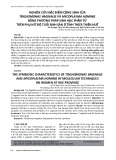

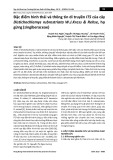



![Bài tập Đa dạng thế giới sống [kèm đáp án/ hướng dẫn giải]](https://cdn.tailieu.vn/images/document/thumbnail/2025/20251123/thaohoang9203@gmail.com/135x160/5861763951302.jpg)
